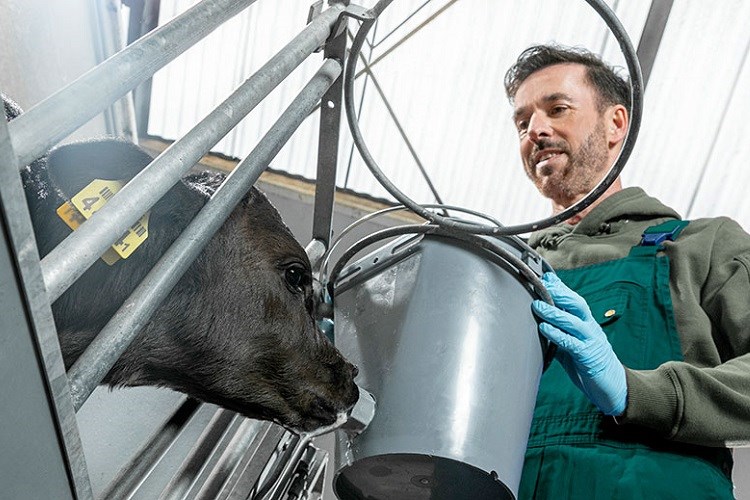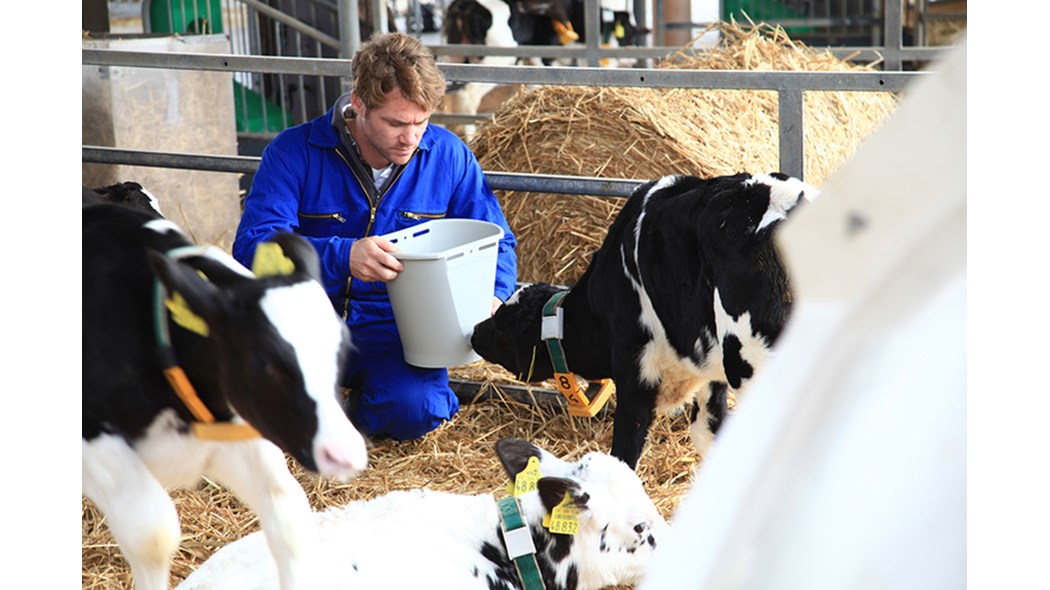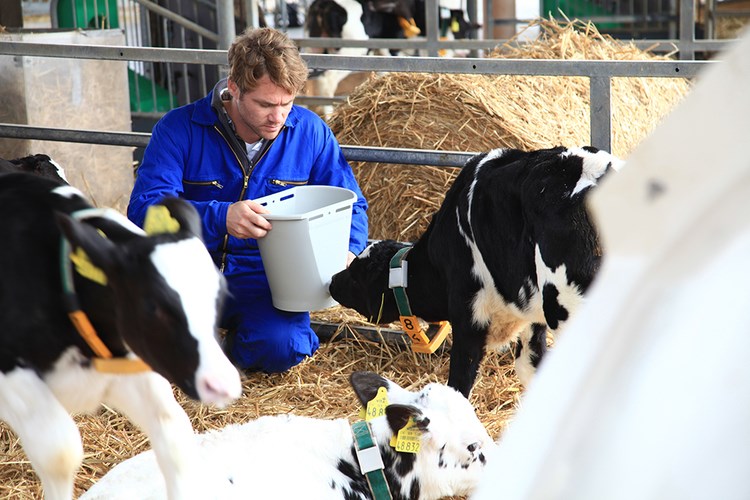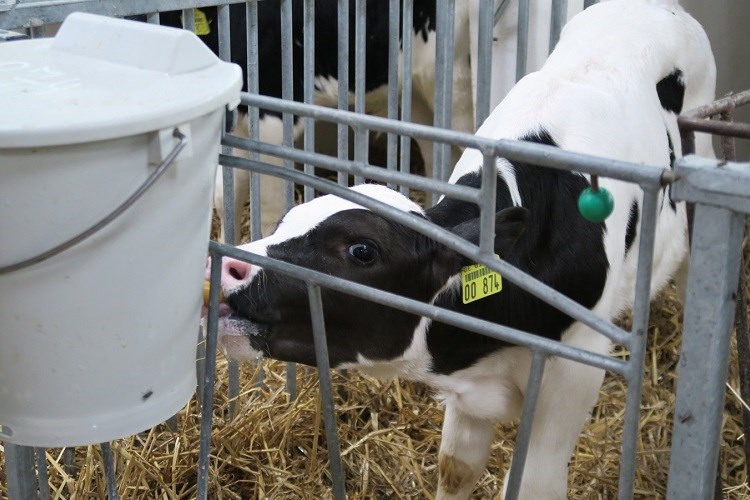
Key takeaways from the research
-
Delayed gastric emptying in calves fed high amounts of calf milk replacer reduces the speed of gut delivery of nutrients
-
Feeding dairy calves high planes of nutrition results in delayed gastric emptying
-
A high plane of nutrition does not increase the risk of insulin resistance

Delayed abomasal emptying prevents the development of insulin resistance
One of the most common concerns when feeding young calves elevated planes of nutrition is the effect on insulin sensitivity[1]. Hyperglycaemia, hyperinsulinemia, and glucosuria are commonly observed in veal calves fed large volumes of milk early in life[2,3,4]. Insulin resistance could result in reduced efficiency of protein and energy utilization[5] or could increase the risk of developing metabolic diseases at a later age[6,7]. The rate of abomasal emptying may reduce the speed of nutrient delivery to the small intestines and meals with high glucose levels have been shown to reduce the rate of gastric emptying[8]. Larger meals may also delay gastric emptying and thus help control blood glucose levels[9,10].
MacPherson et al[9,10] studied the effect of feeding high amounts of calf milk replacer on glucose metabolism and gastric emptying.
Study design
Two groups of 6 calves each were included in the study. Both groups were fed twice daily. One group was fed a restricted amount of 4 litres of calf milk replacer per day, the other group was fed an elevated plane of nutrition with 8 litres per day.
At 4, 7 and 10 weeks of age, abomasal emptying was determined by measuring the postprandial response to plasma glucose, insulin, and acetaminophen supplied with the meal and a glucose tolerance test was performed.
Results
The rate of gastric emptying was reduced at 4 and 7 weeks in the calves fed the high planes of nutrition. Differences between the glucose tolerance tests carried out in both groups at 4, 7 and 10 weeks were not found.
Conclusion
It was concluded that a twice-daily feeding schedule with high planes of nutrition does not induce insulin resistance.
References
[1] *Bach, A., L. Domingo, C. Montoro, and M. Terré. 2013. Short communication: Insulin responsiveness is affected by the level of milk replacer offered to young calves, J. Dairy Sci. 96:4634–4637.
[2] Hostettler-Allen, R. L., L. Tappy, and J. W. Blum. 1994. Insulin resistance, hyperglycemia, and glucosuria in intensively milk-fed calves, J. Anim. Sci. 72:160–173.
[3] Hugi, D., L. Tappy, H. Sauerwein, R. M. Bruckmaier, and J. W. Blum. 1998. Insulin-dependent glucose utilization in intensively milk-fed veal calves is modulated by supplemental lactose in an age-dependent Manner, J. Nutr. 128:1023–1030.
[4] Vicari, T., J. J. G. C. Van den Borne, W. J. J. Gerrits, Y. Zbinden and J. W. Blum. 2008. Postprandial blood hormone and metabolite concentrations influenced by feeding frequency and feeding level in veal calves, Domest. Anim. Endocrinol. 34:74–88.
[5] van den Borne, J. J. G. C., M. W. A. Verstegen, S. J. J. Alferink, R. M. M. Giebels, and W. J. J. Gerrits. 2006. Effects of feeding frequency and feeding level on nutrient utilization in heavy preruminant calves, J. Dairy Sci. 89:3578–3586.
[6] Kaufhold, J. N., H. M. Hammon, R. M. Bruckmaier, B. H. Breier, and J. W. Blum. 2000. Nutrition, feeding, and calves: postprandial metabolism and endocrine status in veal calves fed at different frequencies, J. Dairy Sci. 83:2480–2490.
[7] Quigley, J. D., T. A. Wolfe, and T. H. Elsasser. 2006. Effects of additional milk replacer feeding on calf health, growth, and selected blood metabolites in calves, J. Dairy Sci. 89:207–216.
[8] Wittek, T., P. D. Constable, T. S. Marshall, and S. S. Crochik. 2005. Ultrasonographic measurement of abomasal volume, location, and emptying rate in calves, Am. J. Vet. Res.
[9] Sen, I., P. D. Constable, and T. S. Marshall. 2006. Effect of suckling isotonic or hypertonic solutions of sodium bicarbonate or glucose on abomasal emptying rate in calves, Am. J. Vet. Res.
[10] Coradini, M., J. S. Rand, L. J. Filippich, J. M. Morton, and C. A. O'Leary. 2015. Associations between meal size, gastric emptying and post-prandial plasma glucose, insulin and lactate concentrations in meal-fed cats. J. Anim. Physiol. Anim. Nutr, 99:757–766.






